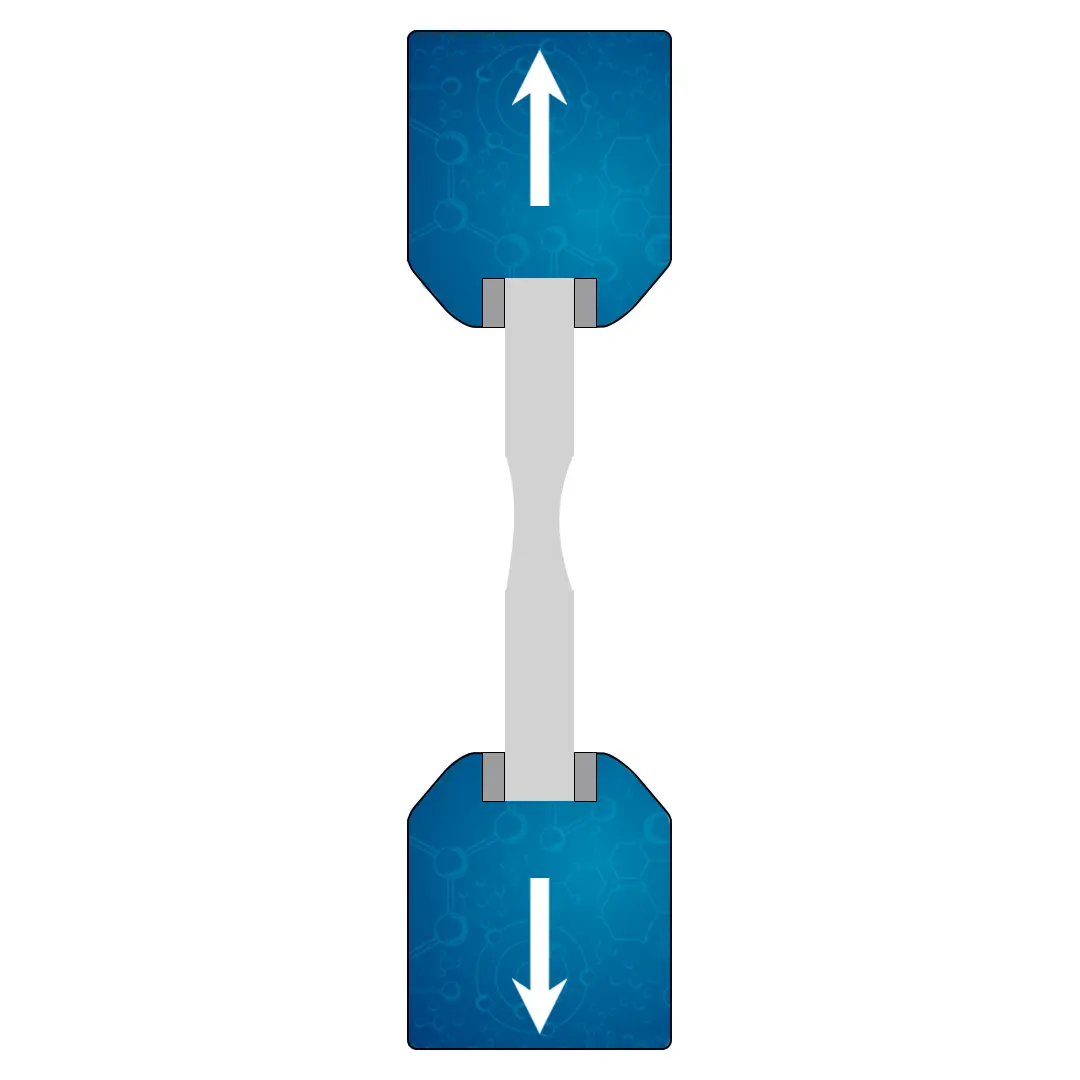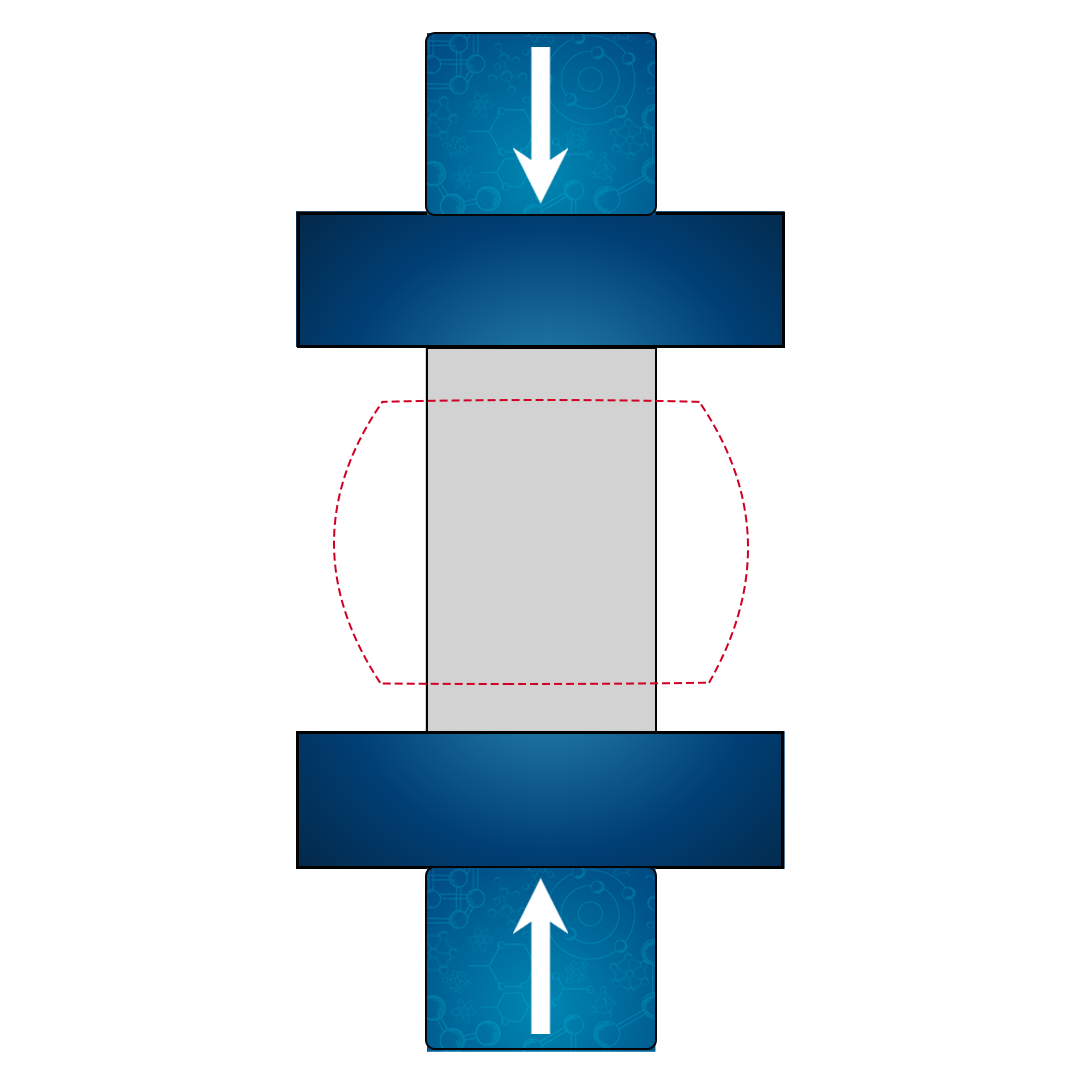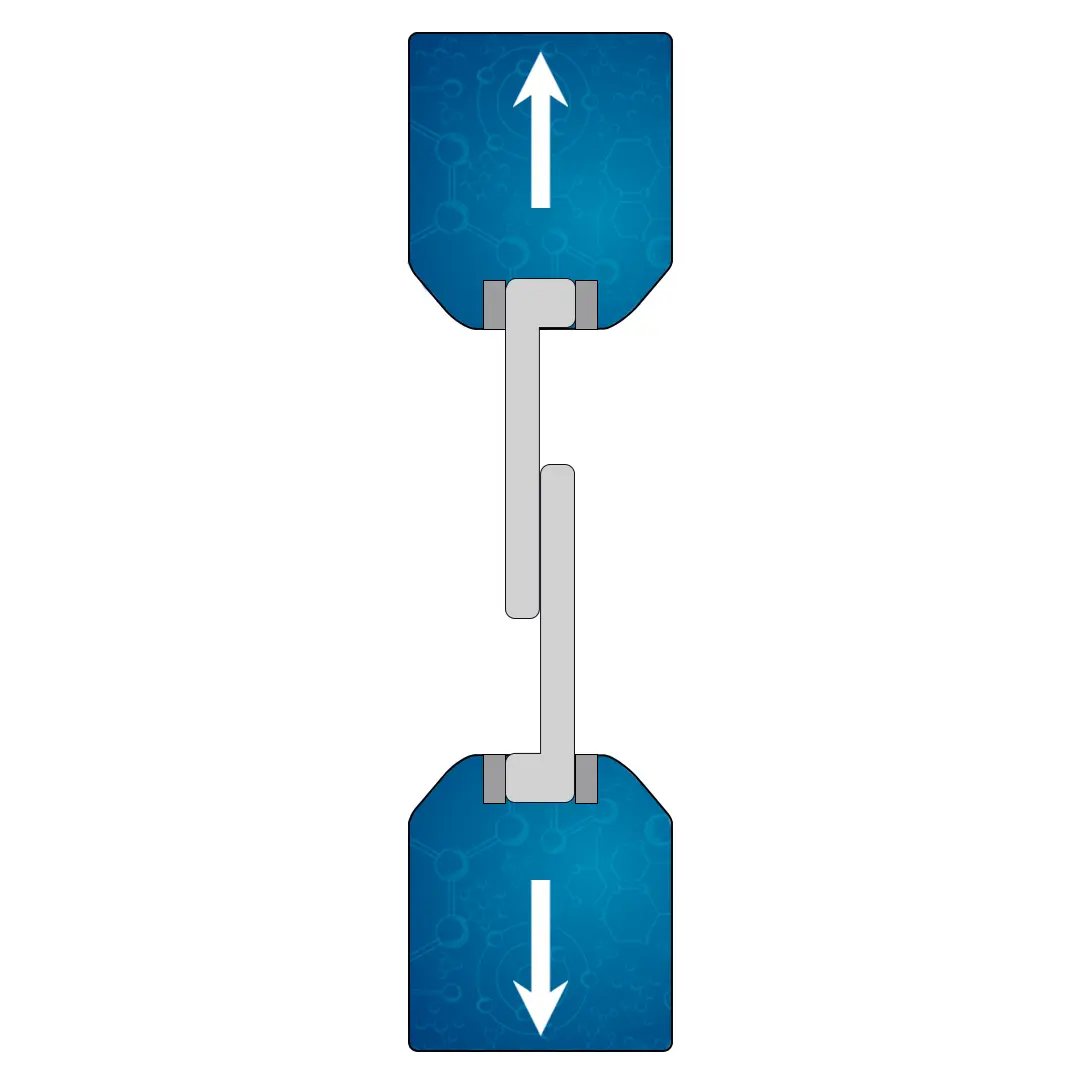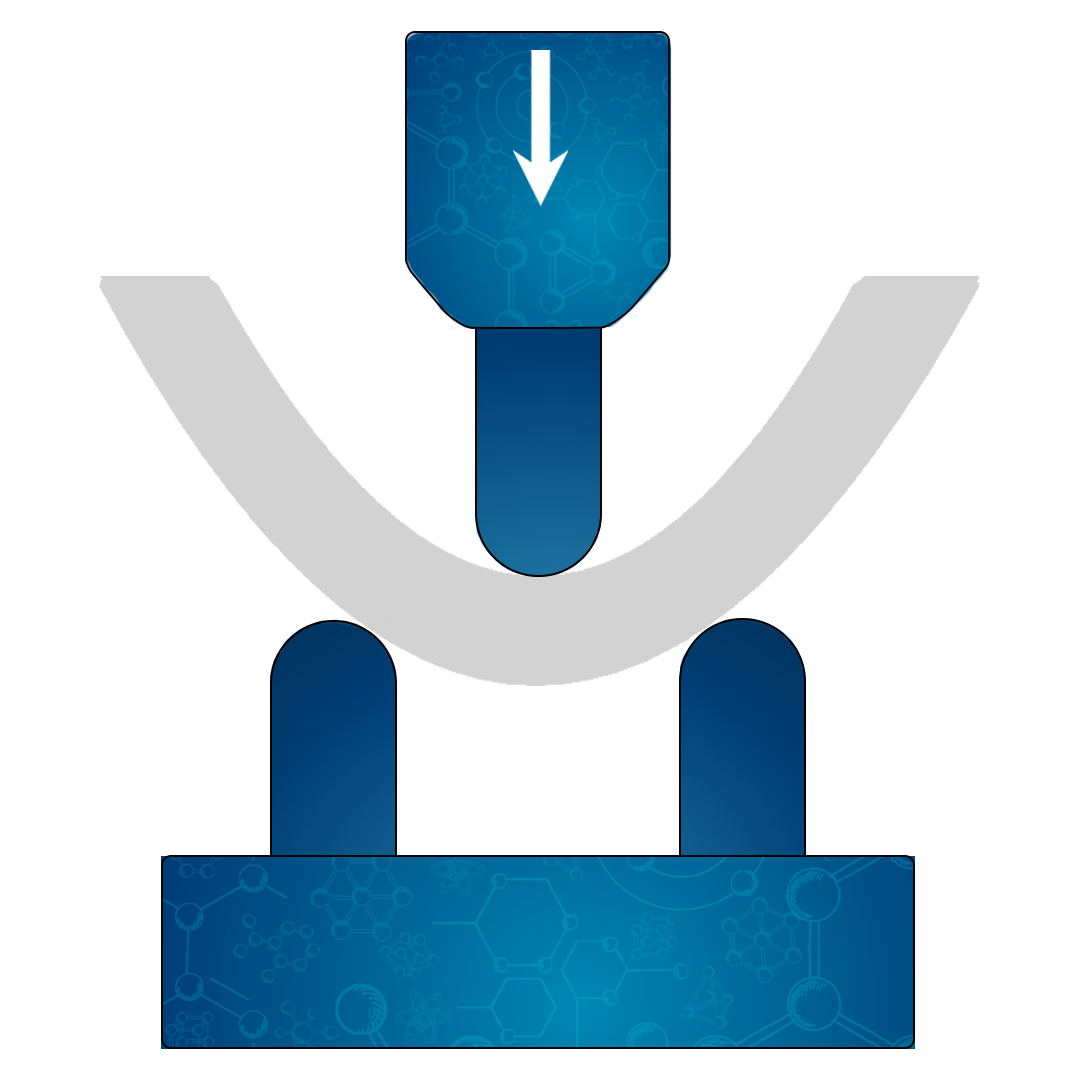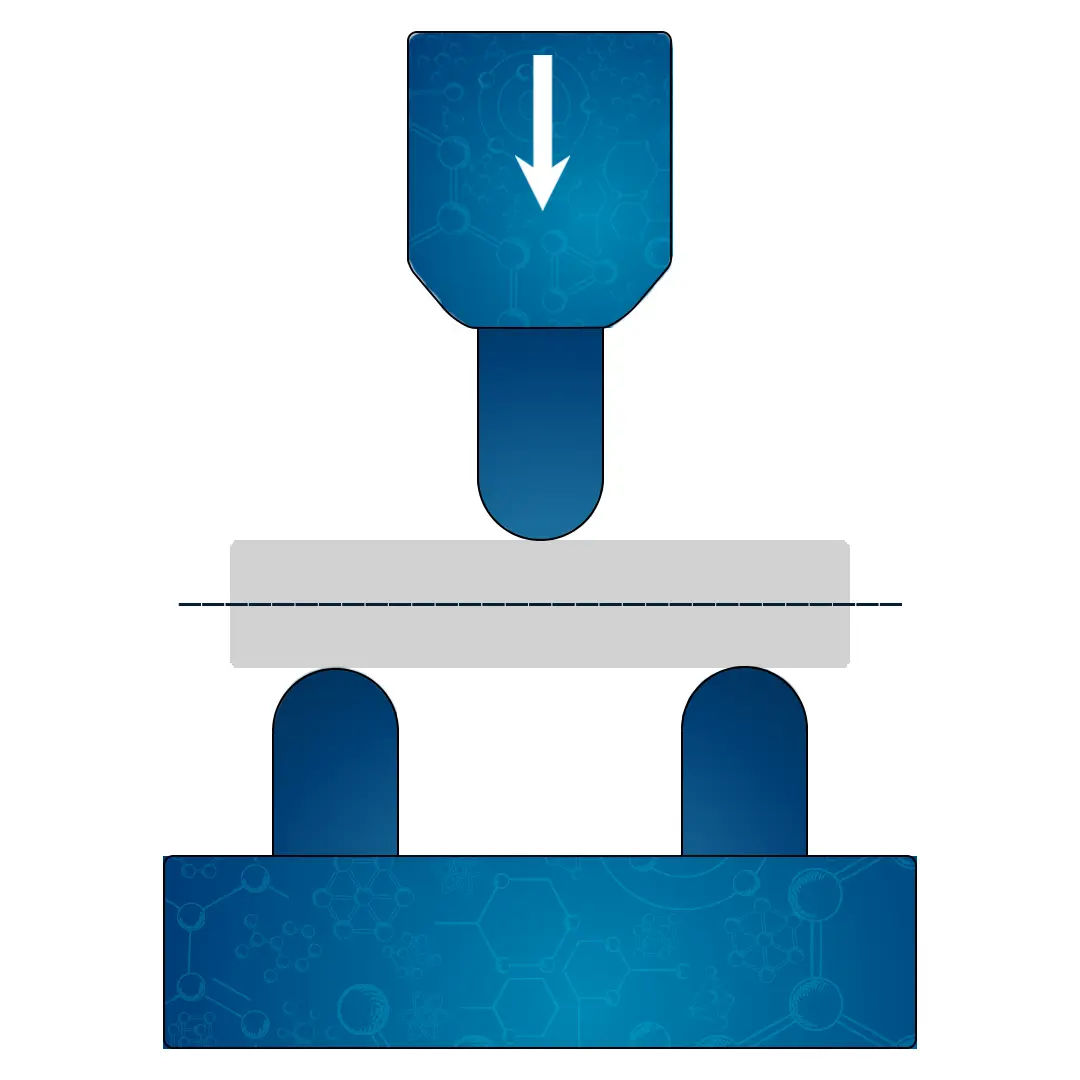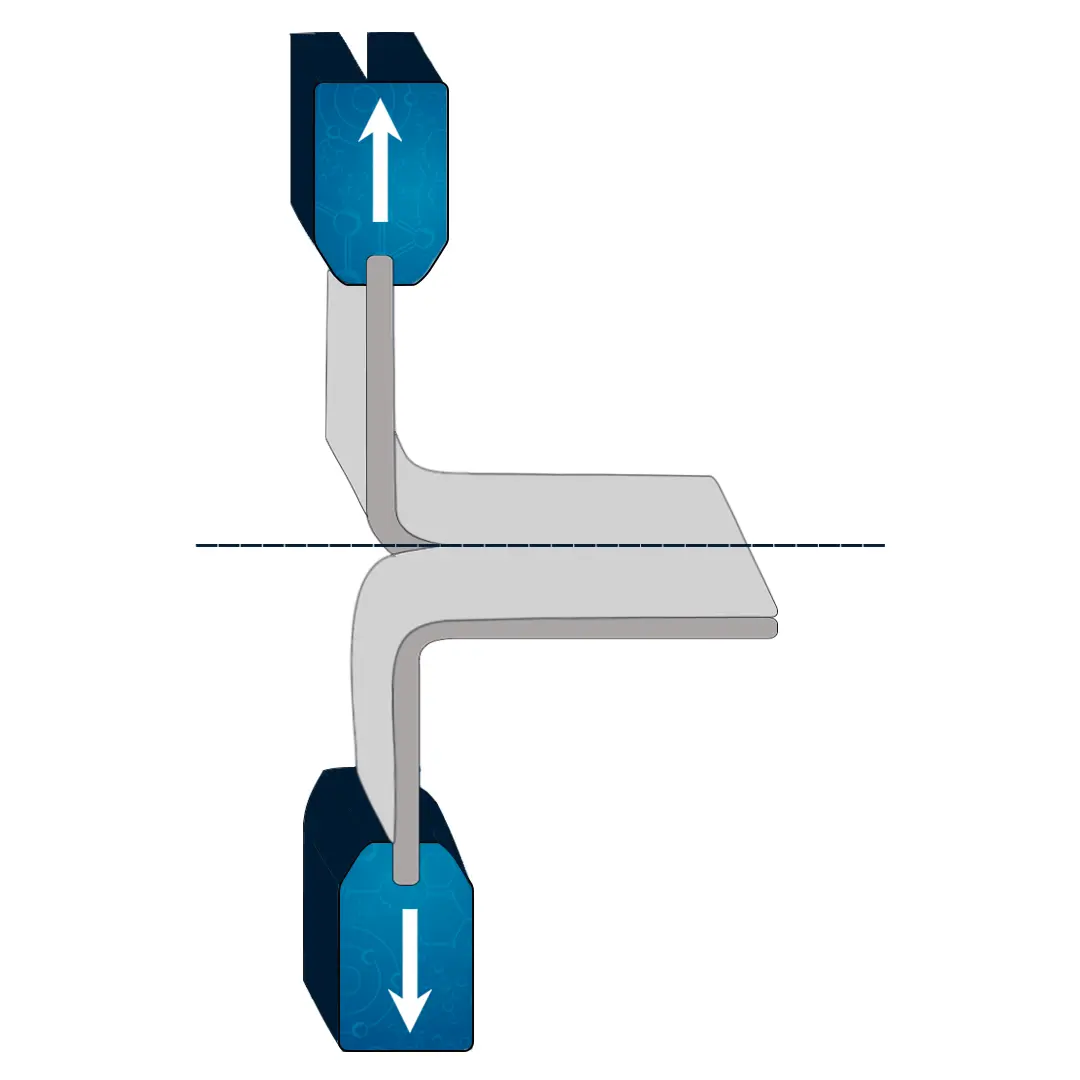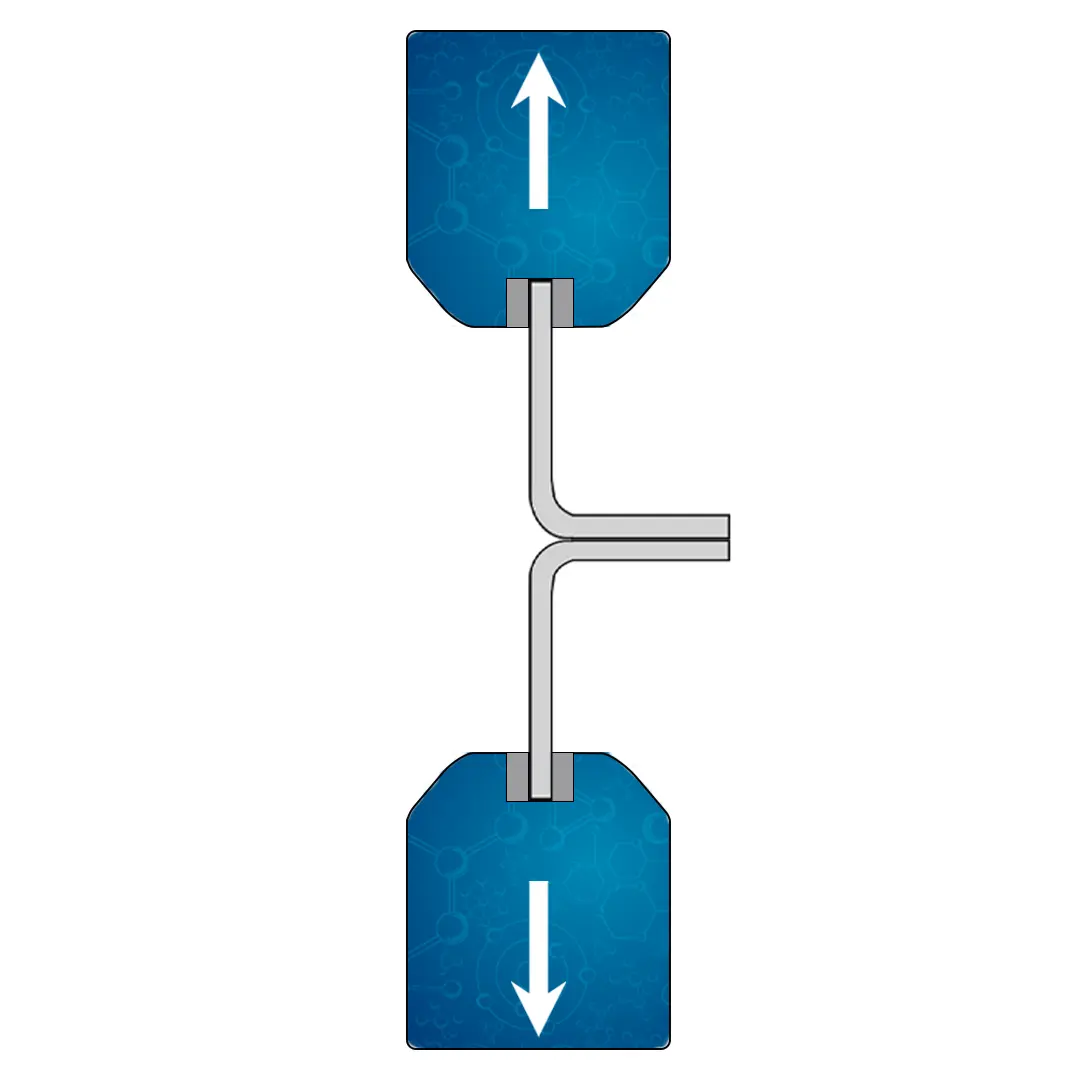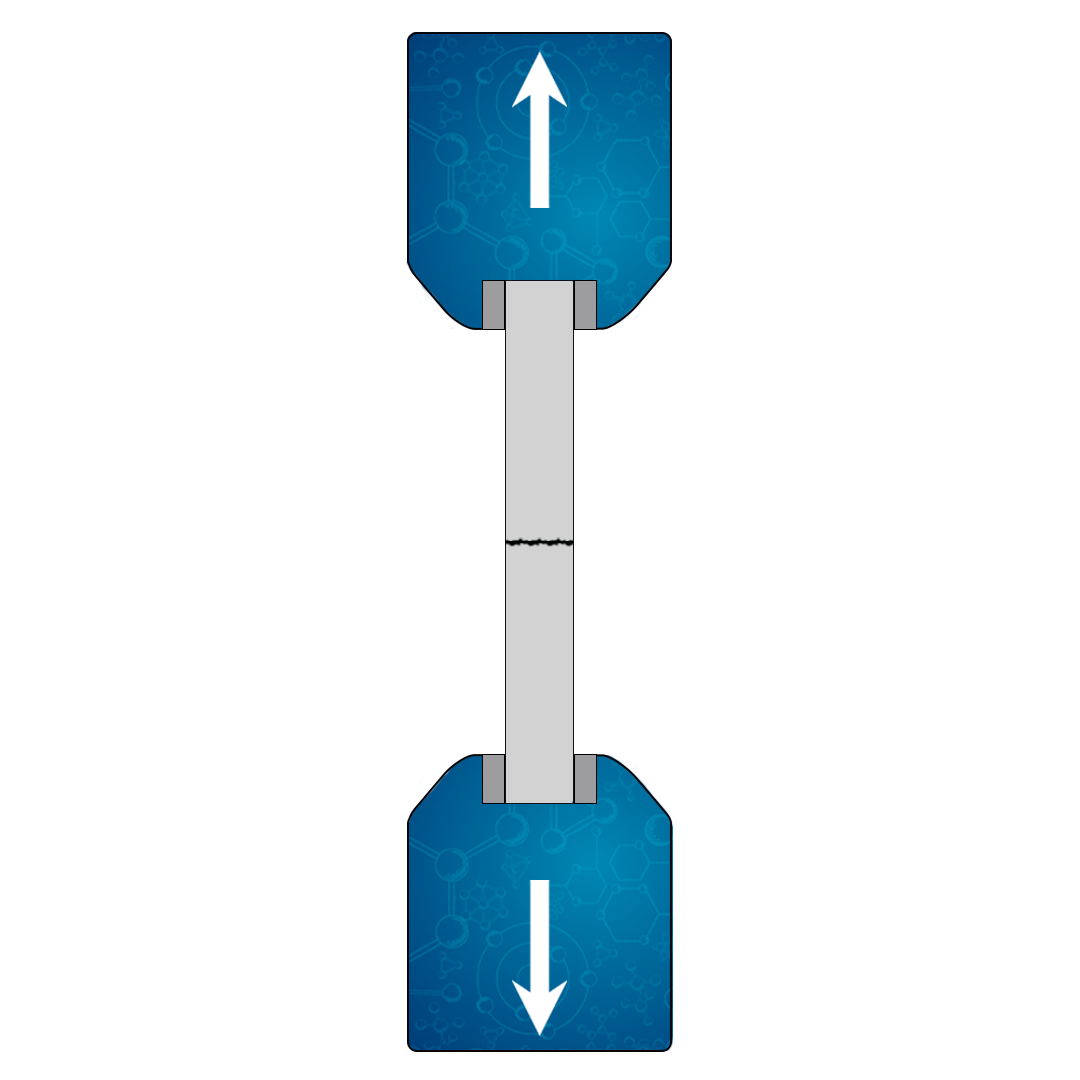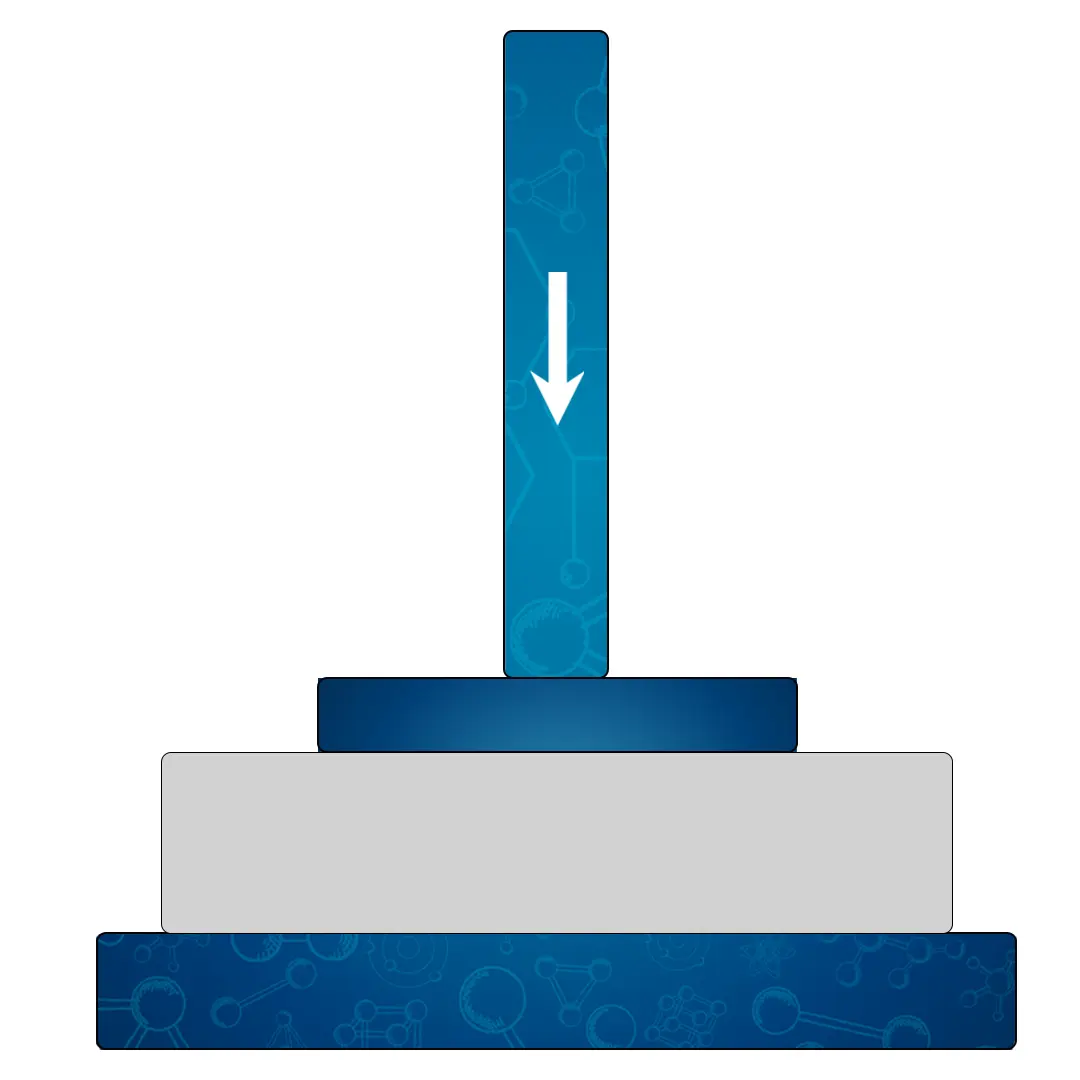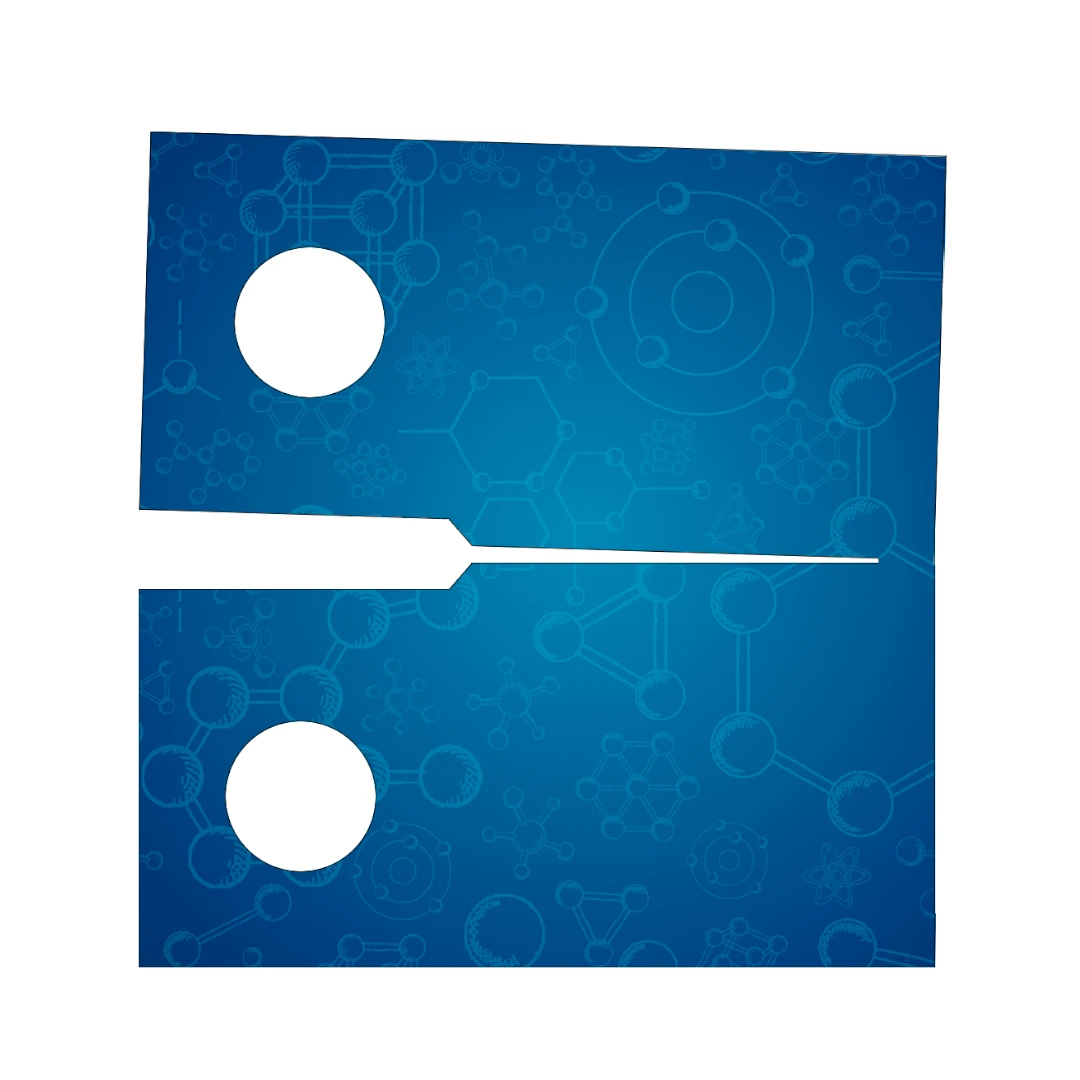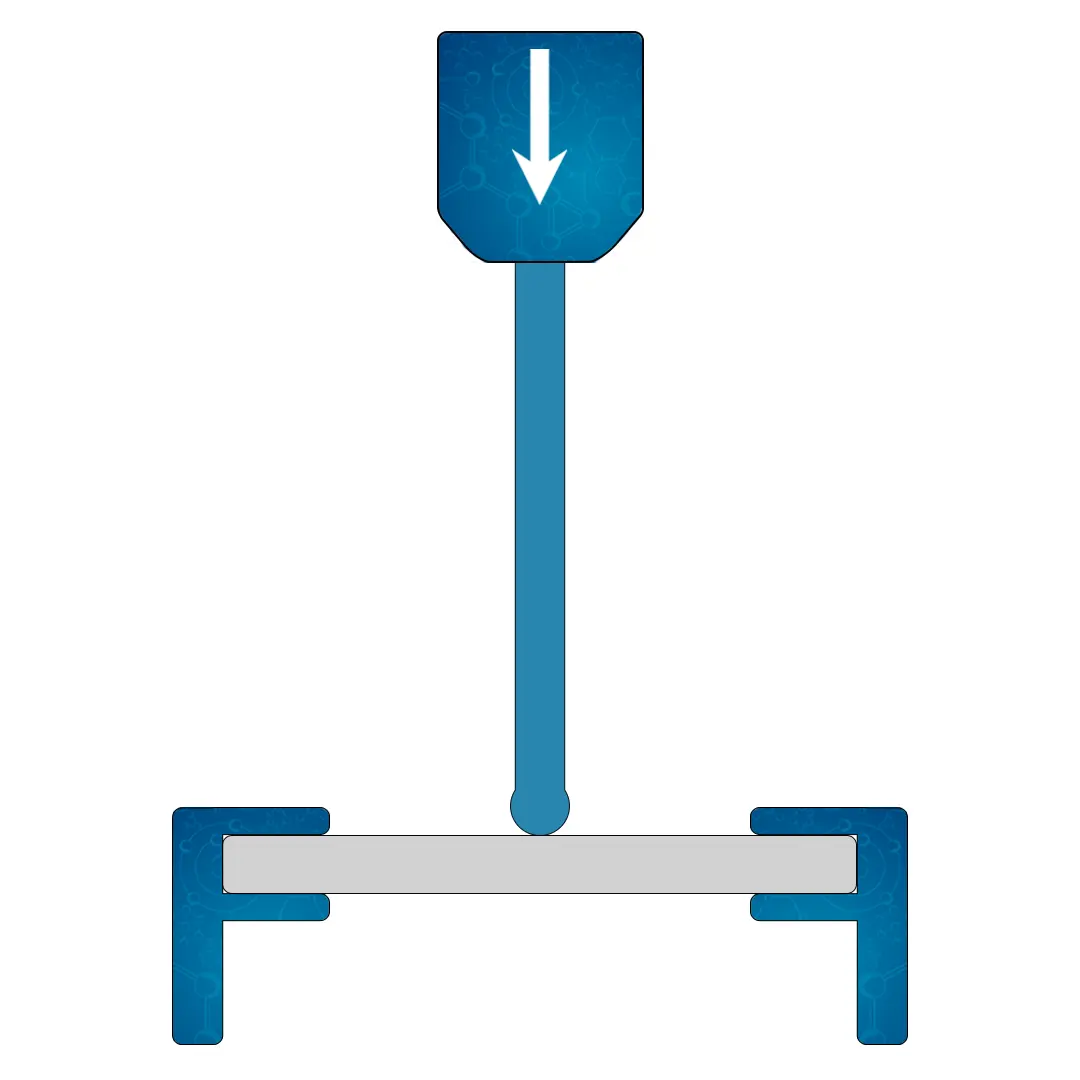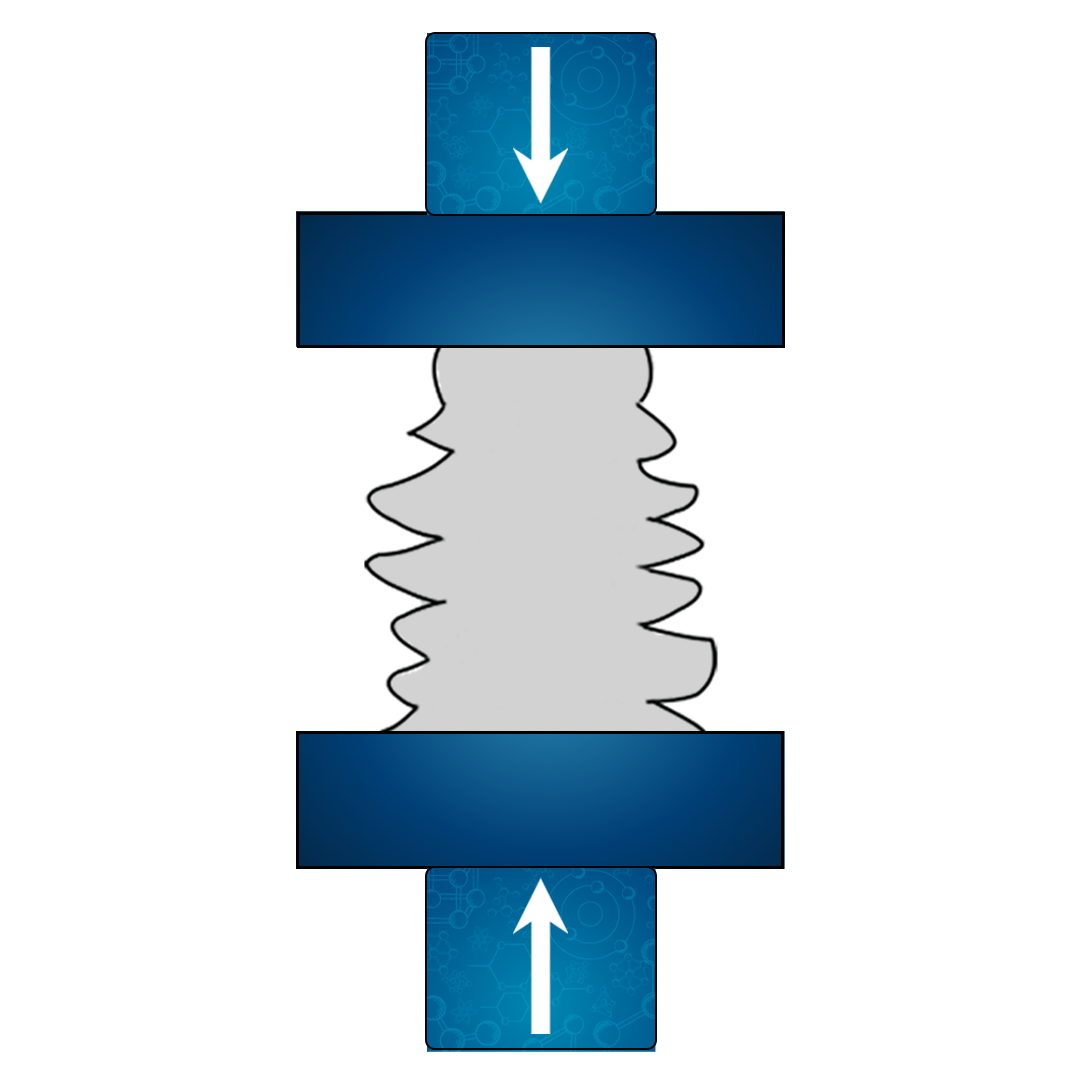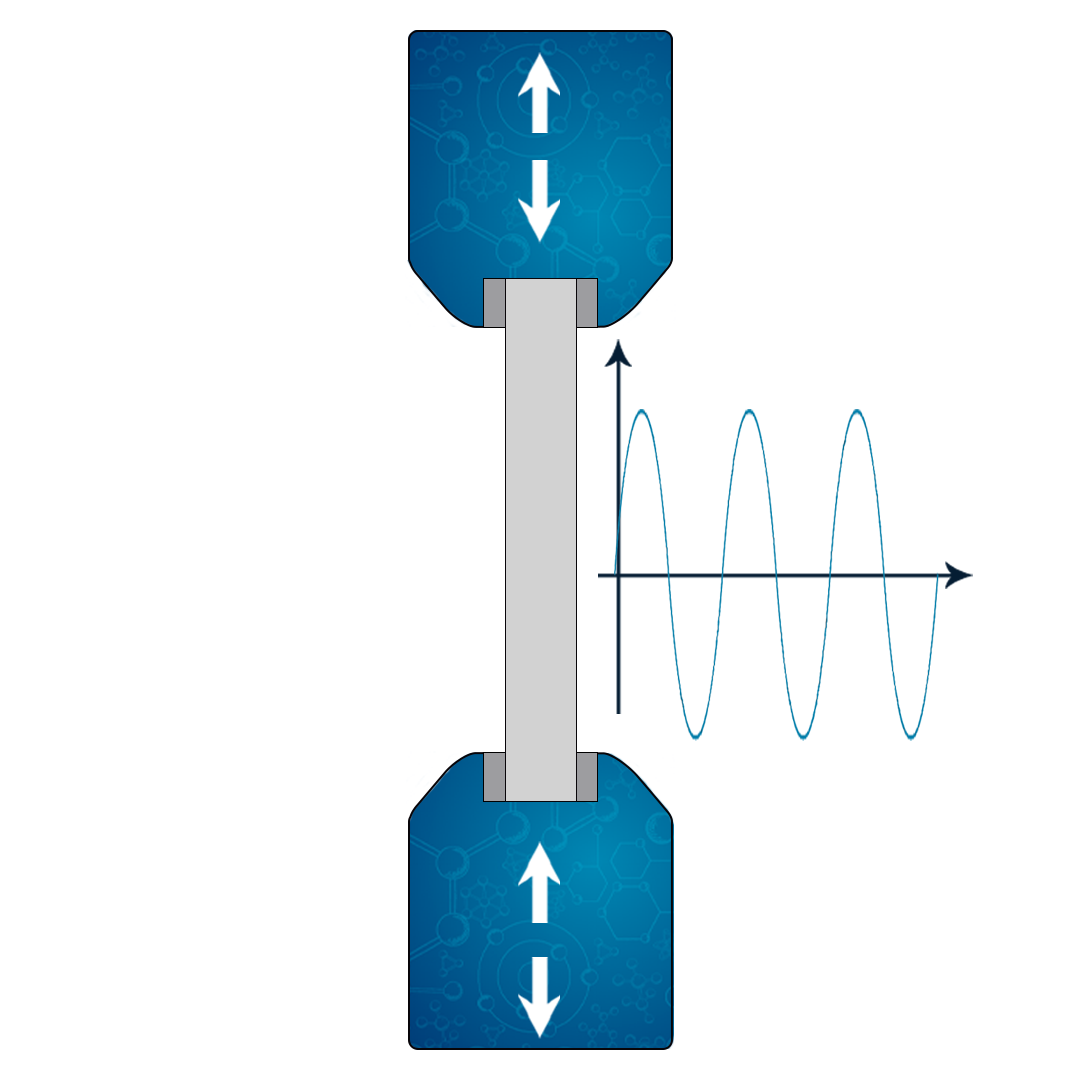Torsion Testing: A Comprehensive Guide to Engineering Analysis
In this article, we will explore the torsion testing, a critical process in the field of materials engineering. We will delve into what torsion is, its testing methods, the purpose and predictive nature of these tests, types of materials tested, standards followed, applications, and much more.
In the following text, you will find a summary of the topics that will be addressed in this article.
What is Torsion?
Torsion refers to the twisting of an object due to an applied torque or twisting force. It involves the rotation of an object around its longitudinal axis, causing shear stress over its cross section.
In the context of material science and engineering, torsion is a critical concept, as understanding how materials behave under torsional stress can influence design and manufacturing processes in various applications, ranging from automotive components to building infrastructure.
What is Torsion Testing?
Torsion testing is a process used to determine how a material will react to torsional stress, which is the twisting or rotational force applied to it. In this testing, a sample of the material, usually in the form of a rod or tube, is secured at both ends. One end is then rotated to apply a specific amount of torque, while the other remains fixed.
Video about Torsion Testing
Representation of a Torsion Testing

Purpose of Torsion Testing
The purpose of a torsion test is to evaluate and understand a material’s behavior when subjected to twisting or rotational forces. This testing provides valuable insights into several essential aspects:
- Determine Torsional Strength: Understanding the maximum amount of torsional stress a material can endure before failure helps in selecting materials for specific applications where twisting forces are prevalent.
- Measure Shear Modulus: By evaluating the material’s rigidity and how it deforms under shear stress, engineers can predict how the material will perform in real-world conditions.
- Evaluate Torsional Stiffness: The relationship between the applied torque and resulting angular deformation provides insights into how resistant a material is to twisting, essential for designing components like axles and shafts.
- Assess Brittleness and Ductility: Torsion testing can reveal a material’s tendency to undergo brittle failure or its ability to deform plastically without fracturing.
- Investigate Fatigue Properties: In dynamic torsion testing, the material’s behavior under repeated or fluctuating twisting loads can be analyzed, essential for components subject to cyclic loading.
- Compliance with Standards: Torsion tests help ensure that materials meet specific industry standards, contributing to quality control and safety.
- Material Comparison and Selection: By comparing torsion properties of different materials, engineers and designers can make informed decisions in selecting the most suitable materials for various applications, such as automotive, aerospace, construction, and manufacturing.
- Research and Development: Torsion tests are vital in the research and development phase, allowing scientists and engineers to explore new materials and innovative designs, ensuring that they can withstand the torsional forces they would encounter in their intended applications.
Overall, torsion testing provides critical data that informs design, manufacturing, and quality assurance processes across various industries. It enables professionals to predict material behavior, optimize designs, and ensure that products are safe, reliable, and efficient.
What Does Torsion Test Measure?
A torsion test measures several key properties and characteristics of a material related to its behavior under torsional forces:
- Torsional Strength: The maximum amount of twisting force a material can withstand before failure. This is crucial in determining a material’s suitability for applications where torsional forces are significant.
- Shear Modulus (G): Also known as the modulus of rigidity, this property quantifies how a material deforms under shear stress. It gives an indication of the material’s stiffness and is expressed as the ratio of shear stress to shear strain.
- Torsional Stiffness: This measures the resistance of the material to twisting, defined as the torque required to produce a unit angle of twist. It helps in understanding how rigid a material is when subjected to torsional loads.
- Yield Strength under Torsion: This is the level of torsional stress at which a material begins to deform plastically. Beyond this point, the material will not return to its original shape when the stress is removed.
- Brittleness: By analyzing how a material fractures under torsional stress, it’s possible to understand its brittleness. Brittle materials may fail suddenly under torsion, while more ductile materials may deform more before breaking.
- Ductility and Toughness: Torsion tests can provide insights into a material’s ability to deform without losing its strength. This is essential for materials that need to absorb energy without failing.
- Fatigue Properties: In dynamic torsion testing, the material’s behavior under repeated or fluctuating twisting loads is analyzed. This is particularly vital for components subjected to cyclic loading, such as engine shafts and suspension systems.
- Torque vs. Angle Curve: The relationship between applied torque and the resulting angle of twist is often plotted to form a curve, which provides a comprehensive understanding of how the material behaves throughout the entire range of applied torques.
- Strain Hardening and Elastic Limits: The test can reveal how the material hardens with deformation and its elastic limits, guiding the design of components that must withstand specific torsional stresses.
In summary, torsion testing offers a multifaceted analysis of a material’s behavior under twisting forces, contributing valuable data for material selection, design optimization, quality control, and compliance with industry standards. It plays a vital role in various fields, including manufacturing, construction, automotive, and aerospace engineering.
What Can Torsion Testing Predict?
Torsion testing predicts a material’s behavior under twisting forces by assessing key properties such as torsional strength, shear modulus, yield strength in torsion, ductility, and brittleness. It enables the understanding of fatigue behavior, failure modes, strain hardening, and elastic limits. The testing also offers insights into a material’s performance under various conditions like extreme temperatures or corrosive environments. Overall, torsion testing helps in material selection, design, quality control, and compliance with industry standards by predicting how materials will perform in real-world applications.
How Does a Torsion Test Work?
A torsion test is a carefully conducted experiment that allows engineers and material scientists to study how a material behaves under twisting forces. Here’s how a typical torsion test works:
- Sample Preparation: The material to be tested is shaped into a standardized specimen, often a rod or a cylindrical bar. The dimensions of the specimen must be carefully controlled, as they directly impact the results.
- Mounting the Specimen: The specimen is clamped at both ends in the torsion testing machine. One end is held fixed, while the other is attached to a device that can apply a rotational force (torque).
- Applying Torque: The torque is applied to one end of the specimen while the other remains fixed. This can be done gradually or at a constant rate, depending on the test requirements. In some tests, cyclic or dynamic loading may be applied to assess fatigue properties.
- Measuring Angular Displacement: As the torque is applied, the angle of twist or angular displacement is carefully measured. This is typically done using angular displacement transducers or other precise measurement tools.
- Recording Data: The applied torque and resulting angle of twist are recorded at various intervals to create a detailed torque vs. angular displacement curve. This curve provides valuable insights into the material’s behavior under torsional stress.
- Observing Behavior: The test may continue to the point where the material fails or yields, depending on the purpose of the test. Observations regarding deformation, cracking, and failure mode are noted.
- Analyzing Results: The collected data is analyzed to determine key material properties such as torsional strength, shear modulus, yield strength under torsion, ductility, and other relevant characteristics. Mathematical and graphical analysis may be employed to interpret the results accurately.
- Compliance with Standards: Torsion tests are often conducted following specific industry standards (such as ISO or ASTM) to ensure consistency and reliability across different materials and testing environments.
- Reporting: A detailed report is prepared, summarizing the methodology, observations, results, and conclusions. This report may be used for quality control, material selection, research and development, or other purposes.
In summary, a torsion test works by applying a controlled twisting force to a standardized specimen and carefully measuring the resulting angular displacement and other behaviors. The insights gained from this test are instrumental in various fields such as engineering, manufacturing, and construction, aiding in material selection, design optimization, and quality assurance.
Types of Torsion Testing
Torsion testing can be broadly categorized into various types based on different factors such as loading conditions, test environment, and purpose. Here’s an overview of the primary types of torsion testing:
Static Torsion Testing:
- Monotonic Torsion Test: This test involves the gradual increase of torque until failure or a specific deformation level is reached. It helps to understand basic material properties like shear modulus and torsional strength.
- Incremental Torsion Test: In this method, the torque is applied in small increments, allowing for detailed observations at different stress levels.
Dynamic Torsion Testing:
- Cyclic Torsion Test: This test subjects the material to repeated or fluctuating torsional loads, mimicking real-world cyclic loading conditions. It’s crucial for assessing fatigue behavior and life estimation.
- High-Frequency Torsion Test: Conducted at higher frequencies, this test is used to understand the material’s response to rapid torsional changes, often relevant in vibration analysis.
Failure Torsion Testing:
- Fracture Torsion Test: This test continues until the specimen fails, providing insights into the ultimate torsional strength and failure mechanisms.
- Yield Torsion Test: Here, the testing continues up to the yield point, providing information about the material’s yield strength under torsion.
Environmental Torsion Testing:
- Temperature-Controlled Torsion Test: Performed at specific temperatures, this test helps in understanding how materials behave under torsional loads in various thermal conditions.
- Corrosion-Resistant Torsion Test: This type evaluates how corrosive environments might affect the torsional properties of materials, essential in industries like marine or chemical processing.
Strain-Controlled Torsion Testing:
- Stress-Relaxation Torsion Test: This test measures how torsional stress decreases over time at a constant strain, relevant in applications where long-term stress relaxation is a concern.
- Creep Torsion Test: In this method, a constant torsional load is applied for an extended period to observe how the material deforms over time, known as creep.
Multi-Axial Torsion Testing:
- Combined Loading Torsion Test: This type combines torsional loads with other stresses like tension or compression to simulate more complex real-world loading scenarios.
Torsion Testing for Specific Materials:
- Hard Tissue Torsion Test: Specifically designed for biological hard tissues like bone.
- Thin Film Torsion Test: Used for materials like thin coatings or films, requiring specialized equipment.
These various types of torsion testing cater to diverse industrial needs, providing insights into the behavior of materials under different conditions and applications. Choosing the appropriate type of torsion test depends on the specific requirements of the study, such as the material being tested, the properties of interest, the expected loading conditions, and the applicable industry standards.
Properties Obtained in Torsion Testing
Torsion testing provides valuable insights into several mechanical properties and characteristics of a material related to its behavior under torsional forces. The primary properties obtained through torsion testing include:
- Torsional Strength: The maximum amount of twisting force a material can endure before failure.
- Shear Modulus (G): A measure of the material’s stiffness under shear stress, often referred to as the modulus of rigidity.
- Torsional Stiffness: The resistance of the material to twisting, indicating how rigid the material is when subjected to torsional loads.
- Yield Strength in Torsion: The level of torsional stress at which a material begins to deform permanently.
- Ductility and Brittleness: These properties are deduced from the way the material deforms or fails under torsional stress, indicating whether it’s more likely to undergo ductile deformation or brittle failure.
- Fatigue Behavior: The material’s response to repeated or fluctuating torsional loads, vital for components exposed to cyclic loading.
- Strain Hardening and Elastic Limits: Insights into how the material hardens with deformation and its limits within elastic behavior.
- Torque vs. Angle Curve: A comprehensive view of how the material behaves through the entire range of applied torques, represented as a relationship between applied torque and resulting angle of twist.
- Behavior Under Various Conditions: Understanding how different temperatures and environmental conditions may affect torsional properties.
- Failure Modes and Mechanisms: Analyzing how and why a material fails under torsion, which aids in failure analysis and design improvements.
These properties are essential in various fields, including manufacturing, construction, automotive, and aerospace engineering, for material selection, design optimization, quality control, and compliance with industry standards. Torsion testing offers a multifaceted view of a material’s behavior under twisting forces, making it a vital tool in material science and engineering.
How to Calculate Torsion Testing?
Calculating the results of a torsion testing test involves understanding several key parameters and applying specific formulas to interpret the data. Here’s a step-by-step guide to the calculations involved in torsion testing:
Determine the Geometric Properties:
- Length (L): Measure the length of the specimen between the clamping points.
- Diameter (D): If the specimen is cylindrical, measure the diameter. If it’s not, you’ll need to calculate the polar moment of inertia.
Calculate the Polar Moment of Inertia (J):
For a solid circular shaft, the polar moment of inertia is given by:
Measure Torque (T) and Angular Displacement (θ):
- Torque (T): Measure the applied twisting force in Newton-meters (N·m).
- Angular Displacement (θ): Measure the angle of twist in radians.
Calculate Shear Modulus (G):
The shear modulus can be determined using:
Calculate Shear Stress (τ):
Shear stress can be calculated using:
where r is the radial distance from the center to the point where the stress is calculated.
Calculate Torsional Strength:
Torsional strength is determined at the point where the material fails and is equivalent to the maximum shear stress.
Plot Torque vs. Angular Displacement:
Create a graph plotting torque against angular displacement to visually represent the material’s behavior under torsion.
Analyze Additional Properties:
Depending on the test type, you may also analyze properties like fatigue behavior, strain hardening, and elastic limits, using relevant mathematical models and experimental data.
Ensure Compliance with Standards:
Calculations must be performed in accordance with specific standards like ISO or ASTM to guarantee accuracy and consistency across different materials and tests.
Conclusion:
Calculating torsion testing involves a combination of geometric considerations, measurements of applied torque and angular displacement, and the application of formulas to derive key properties like shear modulus and torsional strength. Proper instrumentation, adherence to standards, and careful analysis are vital for obtaining accurate and meaningful results. These calculations enable engineers and material scientists to understand how materials will behave under torsional loads, informing decisions in design, manufacturing, and quality control.
Materials Tested with Torsion Testing
Torsion testing is used to study various kinds of materials including metallic, polymer, ceramic, and composite materials. Here’s a detailed examination of these categories, including examples:
1. Metallic Materials:
SAE 1020 Steel:
- Description: A low-carbon steel, widely used in engineering and construction.
- Typical Shear Modulus: 80 GPa
- Torsional Strength: Approximately 370 MPa
- Applications: Shafts, machine parts, and structural components.
Aluminum 6061:
- Description: An aluminum alloy with good strength-to-weight ratio.
- Typical Shear Modulus: 26 GPa
- Torsional Strength: Around 110 MPa
- Applications: Aerospace components, bicycle frames, and automotive parts.
2. Polymer Materials:
Polyethylene (PE):
- Description: A widely-used plastic, known for its versatility.
- Typical Shear Modulus: 0.12 – 1.5 GPa (depending on type)
- Torsional Strength: Variable, depending on grade and crystallinity.
- Applications: Packaging, pipes, and insulating wires.
Polycarbonate (PC):
- Description: A robust and transparent plastic.
- Typical Shear Modulus: 2.6 GPa
- Torsional Strength: Around 55 MPa
- Applications: Safety glasses, compact discs, and automotive parts.
3. Ceramic Materials:
Alumina (Al2O3):
- Description: A high-strength ceramic material.
- Typical Shear Modulus: 160 GPa
- Torsional Strength: Approx 230 MPa
- Applications: Insulators, cutting tools, and biomedical implants.
Zirconia (ZrO2):
- Description: Known for its toughness and resistance to wear.
- Typical Shear Modulus: 70 – 80 GPa
- Torsional Strength: Around 200 MPa
- Applications: Dental crowns, ball bearings, and cutting tools.
4. Composite Materials:
Carbon Fiber Reinforced Polymer (CFRP):
- Description: A lightweight, high-strength composite material.
- Typical Shear Modulus: 5 – 20 GPa (depending on fiber orientation)
- Torsional Strength: 100 – 600 MPa
- Applications: Aerospace structures, sports equipment, and automotive bodies.
Fiberglass:
- Description: A fiber-reinforced composite material made of glass fibers embedded in a resin matrix.
- Typical Shear Modulus: 5.5 GPa
- Torsional Strength: Around 50 MPa
- Applications: Boat hulls, car bodies, and wind turbine blades.
Each of these materials exhibits distinct torsional behaviors, and torsion testing is essential to understand their performance under twisting loads. The data obtained from torsion testing allows engineers and scientists to choose the right material for a specific application, considering factors like strength, stiffness, weight, cost, and environmental conditions. The typical values mentioned are general approximations and may vary based on processing, testing conditions, and specific grade or formulation of the material.
Parts and Components of a Torsion Testing Machine ou Torsion tester
A Torsion Testing Machine, or torsion tester, is a specialized piece of equipment used to apply torsional stress to test specimens and measure their response. Here are the primary components and parts of a typical torsion testing machine:
- Frame: Provides support and stability to the entire setup, usually made of rigid steel or cast iron.
- Chucks or Grips: Used to hold the specimen securely in place, varying types depending on the specimen’s shape and size.
- Torsion Actuator: Applies the required twisting force to the specimen, can be electromechanical, hydraulic, or pneumatic.
- Torque Sensor: Measures the applied torque, often based on strain gauge technology.
- Angular Displacement Sensor: Measures the angle of twist in the specimen, commonly employing rotary encoders or potentiometers.
- Environmental Chamber (Optional): Allows testing under specific environmental conditions like temperature or humidity.
- Control Panel and Software Interface: Enables the operator to set up the test, control the parameters, and monitor the process through touchscreens or computer interfaces.
- Safety Features: Includes shields, emergency stop buttons, and complies with international safety standards.
- Calibration and Measurement Systems: Ensures the machine provides accurate results through calibration equipment, data acquisition systems, and signal conditioning units.
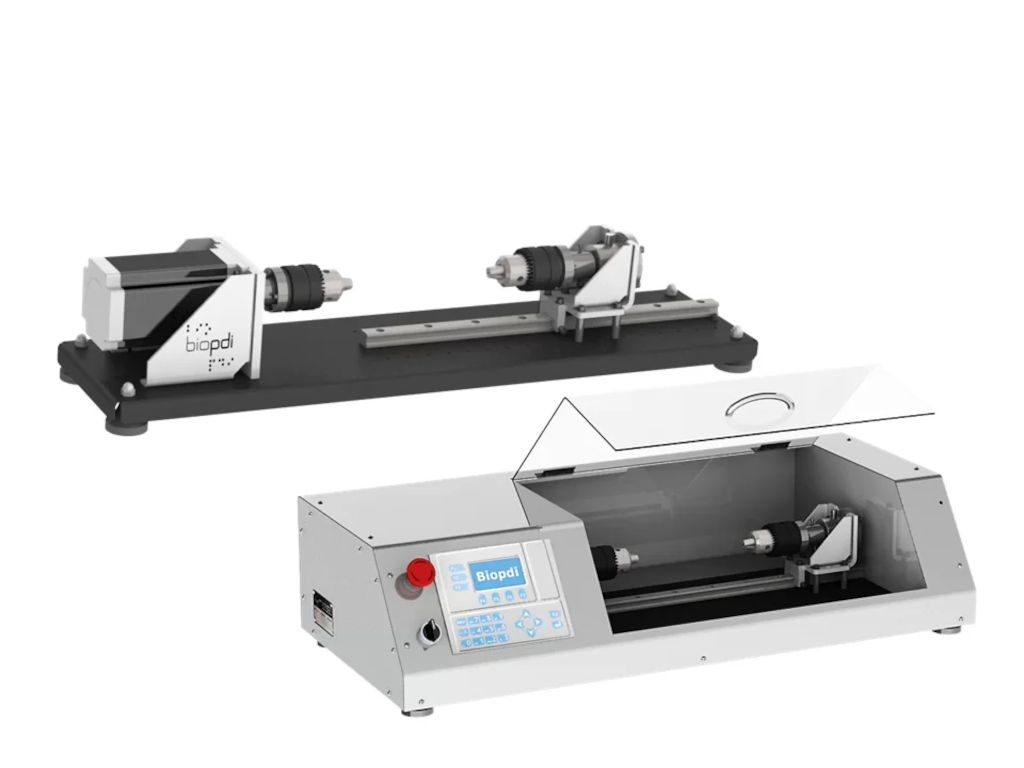
Conducting a torsion test using a Torsion Testing Machine
Conducting a torsion test using a Torsion Testing Machine requires a series of carefully planned and executed procedures. Here’s a detailed step-by-step guide:
- Prepare the Specimen: Select the appropriate specimen, ensuring it is clean and free of surface defects. Its dimensions must be carefully measured and recorded.
- Configure the Machine: Adjust the machine settings, including the torque range, angular velocity, and any other specific parameters in line with the testing standards and requirements.
- Install the Specimen: Carefully mount the specimen between the chucks or grips, ensuring that it’s properly aligned and secured.
- Set Environmental Conditions (if required): If the test requires specific temperature or humidity conditions, program and stabilize the environmental chamber.
- Calibrate the Sensors: Ensure that the torque sensor, angular displacement sensor, and load cell are calibrated according to the manufacturer’s guidelines and standards.
- Perform a Preload (if necessary): Apply a small preload to remove any slack in the system and ensure a consistent start to the testing.
- Begin the Test: Start the torsion test through the control panel or software interface, gradually applying the planned torque or angular displacement.
- Monitor the Test: Watch the test progress, paying attention to both the machine’s readings and the specimen’s physical response.
- Record the Data: Collect data including torque, angular displacement, time, and other relevant parameters. Most modern machines will record this data automatically.
- Analyze Failure (if applicable): If the test involves taking the material to failure, analyze the failure mode and location.
- Export and Analyze Results: Utilize the data to create graphs, calculate material properties, and analyze the results in accordance with the testing purpose.
- Compile a Report: Prepare a detailed report that includes the test method, results, observations, and conclusions, adhering to the applicable testing standards.
- Clean and Maintain the Machine: After the test, remove the specimen, clean the machine, and perform any necessary maintenance to ensure it’s ready for the next test.
Conducting a torsion test is a complex and meticulous process that requires a clear understanding of both the material being tested and the equipment used. Following these procedures ensures that the test is carried out accurately and in accordance with relevant standards, providing valuable insights into the material’s behavior under torsional loading. It’s essential to consult the specific machine’s manual and relevant testing standards to align the procedure with best practices in the field.
Data obtained from a torsion test
In torsion testing using a Torsion Testing Machine, various critical data points are obtained that offer insights into the material’s behavior under torsional stress. Here’s an overview of the data collected:
- Torque: The twisting force applied to the specimen. This is a fundamental measurement in torsion testing and can be used to calculate shear stress.
- Angular Displacement: The angle by which the specimen has twisted. This is used to determine the material’s rigidity or stiffness in torsion.
- Shear Modulus: Calculated from torque and angular displacement, this represents the material’s ability to deform under shear stress and can be used to find its mechanical properties.
- Torsional Strength: The maximum amount of torsional stress a material can withstand before failure. It’s crucial for understanding the material’s performance in service.
- Elastic Limit in Torsion: The maximum torsional stress that a material can withstand without permanent deformation.
- Yield Point in Torsion: The stress at which a material begins to deform plastically. Beyond this point, the material does not return to its original shape when the load is removed.
- Failure Mode: Details on how and where the specimen failed, providing insights into the material’s ductility, brittleness, and fracture characteristics.
- Time-Dependent Behavior: Data on how the specimen behaves over time under sustained torsional loads, including creep or relaxation properties if the test includes such parameters.
- Stress-Strain Curve: A graphical representation of the relationship between applied torque (or shear stress) and the resulting angular displacement (or shear strain), used to derive various material properties.
- Hysteresis Information: In cyclic or dynamic torsion testing, information about the energy dissipation and damping properties of the material.
The data obtained from a torsion test provides a comprehensive view of a material’s behavior under twisting forces. By analyzing these data points, engineers and scientists can make informed decisions about material selection, design, quality control, and failure analysis. It also enables further research and development of materials with specific torsional characteristics. Properly conducted torsion tests, following relevant standards, ensure that these data are accurate and relevant to real-world applications.
The samples/specimens used to perform the Torsion Testing in the Torsion Testing Machine
In torsion testing, the selection of appropriate samples or specimens is vital for obtaining accurate and relevant results. The specimens used can vary widely depending on the material being tested, the purpose of the test, and the specific standards being followed. Here are some general considerations and common types of specimens used for torsion testing:
Cylindrical Specimens:
- Description: These are typically used for metals and are shaped as straight, uniform cylinders.
- Size: The diameter and gauge length must be carefully controlled.
- Preparation: Surface finish and alignment are crucial to avoid stress concentrations.
Tubular Specimens:
- Description: Commonly used for testing hollow materials or tubes.
- Size: Diameter, wall thickness, and length are significant parameters.
- Application: Often used in automotive or aerospace industries.
Rectangular Cross-Section Specimens:
- Description: Used for materials like polymers or composites where a cylindrical shape is not suitable.
- Size: Width, thickness, and length are carefully controlled.
Full-Scale Components:
- Description: Sometimes, actual parts or assemblies are tested to evaluate their torsional performance in real-world conditions.
- Application: Useful for product development and validation.
Custom Shapes:
- Description: For specialized applications or unique materials, custom-shaped specimens may be required.
- Preparation: These may need special jigs or fixtures for mounting in the torsion tester.
Environmental Considerations:
- Description: Specimens may be prepared or treated to simulate specific environmental conditions like temperature or humidity.
- Application: Useful for assessing material behavior under particular operating conditions.
Pre-Stressed or Pre-Strained Specimens:
- Description: Sometimes, specimens are pre-stressed or pre-strained to simulate service conditions.
- Application: Evaluating behavior in fatigue or under complex loading scenarios.
The choice of specimen is closely tied to the material under investigation, the testing standards, and the specific insights desired from the torsion test. Careful preparation, including precise machining, cleaning, and alignment, is essential for obtaining accurate and reliable results. The collaboration between material scientists, engineers, and technicians ensures that the specimens are appropriately selected and prepared, reflecting the real-world applications and behaviors of the materials being studied.
The main standards for obtaining the Torsion Testing
Torsion testing standards define the procedures, methodologies, and requirements to conduct torsion tests accurately and consistently. Here are five ISO standards and five ASTM standards related to torsion testing:
ISO Standards:
- ISO 7800: Metallic Materials – Torsion Test at Ambient Temperature: Details the procedure for conducting torsion tests on metallic materials at room temperature.
- ISO 594: Conical Fittings with 6% (Luer) Taper for Syringes, Needles and Certain Other Medical Equipment: While not directly related to torsion testing, it may include aspects of mechanical testing to ensure proper fittings.
- ISO 80369: Small-Bore Connectors for Liquids and Gases in Healthcare Applications: Similar to ISO 594, this may involve some mechanical or torsional evaluation to ensure secure and standardized connections.
- ISO 7206: Implants for Surgery – Partial and Total Hip Joint Prostheses: Torsion testing may be included to evaluate the mechanical performance of hip joint implants.
- ISO 6475: Implants for Surgery – Metal Bone Screws with Hexagonal Drive Connection, Spherical Under-Surface of Head, Asymmetrical Thread: Torsion testing can be a vital aspect of evaluating the performance of these specialized bone screws.
ASTM Standards:
- ASTM F543: Standard Specification and Test Methods for Metallic Medical Bone Screws: This involves torsion testing for evaluating the mechanical performance and quality of metallic medical bone screws.
- ASTM A938: Standard Test Method for Torsion Testing of Wire: Specifies the torsion testing method for wire, particularly to examine its ductility and surface defects.
- ASTM E2207: Standard Practice for Strain-Controlled Axial-Torsional Fatigue Testing with Thin-Walled Tubular Specimens: Provides the practice for axial-torsional fatigue testing of thin-walled tubular materials, including torsion aspects.
- ASTM F383: Standard Practice for Static Bend and Torsion Testing of Intramedullary Rods: This standard defines the procedures for both bend and torsion testing of intramedullary rods used in medical applications.
- ASTM F2503: Standard Practice for Marking Medical Devices and Other Items for Safety in the Magnetic Resonance Environment: This one may include torsion testing procedures for testing the safety of medical devices in magnetic environments.
Conclusion
torsion testing is a vital tool in material science and engineering that aids in understanding, predicting, and applying materials in real-world scenarios. Its complex nature and the necessity for precision are met through comprehensive standards, dedicated equipment, and well-defined procedures. Whether it’s in the medical field, automotive industry, aerospace, or any other sector that relies on material integrity, torsion testing stands as a cornerstone, bridging the gap between laboratory analysis and practical implementation.
FAQs
What is the objective of torsion testing?
The objective of torsion testing is to determine the material’s behavior under twisting forces, such as shear modulus, ductility, and torsional strength.
What is the difference between torsion test and tension test?
A torsion test applies twisting forces, examining shear properties, while a tension test applies pulling forces, studying tensile properties like elongation and tensile strength.
How is torsion measured?
Torsion is measured by applying a rotational force to a specimen and recording the angle of twist and the applied torque.
What can torsion testing predict?
Torsion testing can predict a material’s shear strength, stiffness, ductility, and resistance to torsional loads.
What is the ASTM standard for torsion test?
Various ASTM standards cover torsion testing, such as ASTM A938 for wire and ASTM E2207 for thin-walled tubular specimens.
Why is torsional analysis important?
Torsional analysis is essential for understanding how materials will behave under twisting loads, critical for designing components in various applications like automotive or aerospace.
What is the conclusion of the torsion test?
The conclusion of the torsion test provides insights into the material’s torsional strength, stiffness, and ductility, vital for material selection and design.
Why is torsional strength important?
Torsional strength is crucial for determining a material’s ability to withstand twisting forces without failure, especially in rotating components like shafts.
Is torsion the same as shear stress?
Torsion leads to shear stress within the material, but they are not the same; torsion is the applied twisting force, while shear stress is the internal resistance to that force.
What is torque in torsion test?
Torque in a torsion test is the twisting force applied to the specimen, measured in units like Newton-meters (Nm).
What are the disadvantages of torsion test?
Disadvantages may include difficulty in aligning the specimen, complex calculations, and potential inaccuracies if not conducted properly.
Why is torsion a problem?
Torsion can be a problem if not accounted for in design, potentially leading to premature failure or deformation in real-world applications.
Why do we do torsion test on mild steel?
Mild steel is often tested to understand its torsional behavior since it’s a commonly used material in various engineering applications.
What are the types of failure in torsion test?
Failure in a torsion test may include shear failure, cracking, or fracturing, depending on material properties and test conditions.
What is the theory of torsion?
The theory of torsion describes how a material will deform under twisting loads, relating torque, angle of twist, material properties, and geometry.
What machine is used for torsion test?
A torsion testing machine or torsion tester is used, capable of applying controlled twisting forces and measuring the resulting deformations.
What is the meaning of the word torsion?
Torsion refers to the act or process of twisting, especially the twisting of a body by the exertion of forces tending to turn one end or part about a longitudinal axis while the other is held fast or turned in the opposite direction.
See more relevant posts
TENSILE TEST
Tensile testing is a crucial mechanical test used to evaluate the strength and ductility of materials. It involves applying a controlled force. See more
COMPRESSION TEST
Compression testing is a fundamental evaluation method employed to assess a material's ability to withstand compressive forces. See more
SHEAR TEST
Shear testing examines a material's response to forces acting parallel to its surface. By applying a force that causes one part of the material. See more
BEND TEST
Bend testing is a mechanical test that determines a material's flexibility and resistance to fracture under bending forces. See more
FLEXURAL TEST
Flexural testing, also known as the three-point bend test, is employed to measure a material's resistance to bending or flexural stress. See more
FRICTION TEST
Coefficient of friction test measures the amount of resistance between two surfaces in contact when one moves relative to the other. See more
TEAR TEST
Tear test determines a material's resistance to tearing forces, often encountered in applications involving thin films, fabrics. See more
PEEL TEST
Peel testing evaluates the strength of adhesion between two materials, typically an adhesive and a substrate. The test involves separating. See more
BOND TEST
Bond test measures the strength of a bond between two materials. It's used in adhesive and weld test. It helps in determining the reliability of joints and interfaces. See more
INDENTATION TEST
Indentation Force Deflection (IFD) is used to characterize the cushioning or compressive properties of a material, especially foams and soft polymers. See more
FRACTURE TEST
Fracture toughness is a material's ability to resist crack propagation. This property is vital for assessing a material's suitability for applications where structural. See more
PUNCTURE TEST
Puncture test examines a material's ability to withstand penetration by sharp objects or forces. This test to evaluate puncture strength and design materials. See more
CRUSH TEST
Crush resistance test measures a material's ability to resist deformation, particularly in terms of compressive force. See more
TORSION TEST
Torsion testing is a critical method in materials engineering, examining how products and materials behave under twisting forces. See more
AXIAL TORSION TEST
Axial torsion test examines a material's behavior when subjected to simultaneous axial and torsional loads. This test to study shear stress. See more
FATIGUE TEST
Fatigue Testing is the evaluation of a material's endurance and failure under repeated stress and cyclic loading conditions. See more.

Author: Mardoqueu M. Costa (Entrepreneur, researcher and writer). I have been working for several years in materials science and engineering and biomedical engineering with emphasis on Entrepreneurship. My focus is on the development of equipment, software, mechanical tests, and the evaluation and creation of new businesses. As a researcher and writer, I have contributed to scientific publications and patents, also working as a technical-scientific consultant for several companies. This integrated approach reflects my commitment to innovation and impact in the technology industry.
Contact us
Phones:
+1 (781) 328 - 2010
sales@biopdi.com
Address:
2 Burlington Woods Dr, Burlington, Massachusetts, United States


